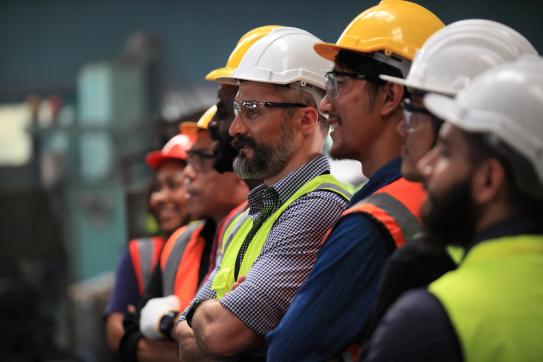Innovation is critical to a company’s future success, but when management is in search of the next great idea, they’d be smart to look beyond just their research and development teams.
This is one of the key observations driving Wei Cai's research. The assistant professor of business in the Accounting Division of Columbia Business School notes that anyone can have innovative ideas on improving organizational outcomes, or improving cultures.
“Innovation is not only about technological improvements,” she says. “So the question is, how do you foster an organizational culture where innovative ideas come from non-professional innovators?”
Cai is particularly interested in what she calls employee-initiated innovation, which is hard to incentivize because it’s voluntary and beyond the scope of employees’ contracted responsibilities. The question of how to incentivize this out-of-the-box thinking led Cai and her collaborators — Susanna Gallani of Harvard Business School and Jee-Eun Shin of the University of Toronto’s Rotman School of Management — behind the scenes at a Chinese manufacturing company to explore the link between a company’s compensation structure and the development of new ideas. Their findings were published in “Incentive Contracts and Employee-Initiated Innovation: Evidence from the Field.”
To explore the connection, Cai traveled to the company’s site to delve into almost three years of records covering more than 500 employees involved in everything from box gluing to transportation. She and her colleagues grouped the employees according to compensation structure — fixed (salary), variable (hourly), and mixed (salary with a variable component) — and discovered the fixed-pay structure resulted in more idea generation. Cai attributes the correlation to the relative freedom afforded by a guaranteed income.
“If employees are paid in a fixed way, they actually have more slack to think,” she explains. “Employees are not machines. They’re human beings, and it’s important to give any human being some slack in order to trigger their intrinsic motivation.”
During Cai’s visit to the company, she also studied the important role managers played in driving employee-initiated innovation. Management encouraged employees at all job levels to contribute their ideas on how to improve productivity, quality, and working conditions and reduce costs.
“The managers in this company were truly curious about how to implement a better system and make the company better,” Cai says. With tight margins and labor-intensive operations, even a small change could result in a meaningful improvement for the company. The management approved about 95 percent of suggestions.
One employee noticed that defective products that couldn’t be sold could be used internally. Another noted that one functioning machine could be reassembled from the parts of two damaged machines, resulting in the need to purchase just one new machine instead of two. Not all of the ideas were focused on the physical work itself: One employee proposed celebrating birthdays once a month to help build team culture.
Cai emphasizes the importance of managers welcoming and respecting all ideas — not just the good ones. “The culture is important because employees need to feel safe proposing ideas,” Cai says. “It could be a good idea, it could be a bad idea, but they should feel psychologically safe to propose any ideas.”
